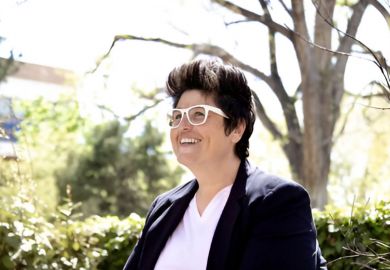Australia’s federal budget, announced last week, includes funding for programmes to advance the government’s ambitious plans for growth in university enrolment – including for disadvantaged groups that have historically been under-represented.
The measures include more effective equity programmes, a system for compulsory practical placements, a timely rejig of the student loan indexation arrangements, a needs-based funding system to support the additional costs of educating students from disadvantaged backgrounds, and funding for many more pre-university enabling programmes to boost access and reduce drop-out rates.
These measures represent a good down payment on last year’s Universities Accord, which articulates a road map towards a bigger, more productive and equitable higher education system. And they are accompanied by a long-overdue commitment to making universities more student-centric. Australia, at long last, will have a national student ombudsman, which should prompt its 39 universities to improve their local complaints mechanisms and, possibly, start to look at the causes of repeat student dissatisfaction.
The worry is that equity is being prioritised at a time when international student numbers are going to be squeezed, inevitably reducing the appetite and available resources for equity among those universities that rely heavily on that income source.
The bigger agenda, meanwhile, rests with the new Australian Tertiary Education Commission (ATEC), which will open in July next year. The future is all about centrally managed growth, beginning in 2026. A colossal A$3.8 billion (£2 billion) has been earmarked for this over the coming decade.
In the recent past, a free-for-all system prevailed whereby universities grew randomly, in response to demand wherever it crystallised. Almost by definition, equity considerations barely got a look in, although equity student enrolments, coincidentally, also increased on this rising tide.
But in the ATEC era, universities will be allowed to grow only in particular fields and by prioritising particular students. Importantly, no restrictions will apply to students from equity backgrounds, including disability, low socio-economic status, regional/rural locations and Indigenous communities. Growth in all other types of student will have to meet a range of criteria.
The decision on whether to hold universities to equity targets has been delegated to ATEC, but meeting such targets could become a ticket to big growth at some universities, hardwiring the interests of traditionally disadvantaged and excluded groups.
But supply-side tinkering won’t be enough. The central issue is on the demand side. The proposed scale of student number expansion should not be taken lightly. There is mixed evidence around whether genuine graduate-level jobs will expand in the same proportion – although the future definition of what a graduate should or will do is also in flux as technology-enabled industries reposition their products and services. University leaders will have to develop compelling new arguments to encourage people to invest in their own higher education.
The traditional rationale for universities to raise their game on equity is more serious than governments or university leaders realise. “Universities for all” is commonly paraded as being about social inclusion, but now it is also about avoiding whole under-represented groups being cut adrift from the knowledge economy just as it moves up a gear, creating a new underclass.
Growing evidence from the US reveals greatly improved employment rates among black and Hispanic groups as the economic boom created by Bidenomics – an approach to economic and education management shared by the current Australian government – begins to take hold. The focus of US federal investment is on technological innovation and adoption; American universities and community colleges have a big role to play in targeting economically marginal groups and giving them incentives to skill up, such as grants to meet the costs of placements or commuting.
Australia’s ministers for education and for skills and training grasp the need to bring their portfolios closer together so that new graduate-level jobs in the future economy are within the sights of marginal groups. But the government has yet to set its sights on a coherent and inclusive knowledge-led economy and what it takes to get there.
The accord also stresses the need to better align vocational and higher education, and it’s good to see A$28 million pledged as a “harmonisation” down payment. But the challenge is rather larger and involves universities becoming more nimble providers of education and know-how, staying ahead of structural changes in the national and global economies. The present AI-fuelled investment boom is a case in point, unleashing a huge appetite for specific higher skills and qualifications, as well as interdisciplinary insights into how people will want to use new technology.
Predicting such demand is something ATEC could undertake, factoring in early on the implications for under-represented groups. For example, students from remote and regional backgrounds will not just want to get into university, but also to be connected to both emerging knowledge economies far away and relevant, accessible teaching in new regional universities or university hubs.
It is no secret that Australian universities currently endure widespread, deeply entrenched indifference to their role in bringing prosperity and social inclusion. The task of shaking up such a culture is not to be underestimated. But if ATEC were to take on this wider role, helping to shape the policy landscape needed for Australia’s future economic prosperity, it might help to press upon popular consciousness just how central higher education will be to that prosperity.
Shamit Saggar is executive director of the Australian Centre for Student Equity and Success, visiting professor at King’s College London and emeritus professor at the University of Essex.
Register to continue
Why register?
- Registration is free and only takes a moment
- Once registered, you can read 3 articles a month
- Sign up for our newsletter
Subscribe
Or subscribe for unlimited access to:
- Unlimited access to news, views, insights & reviews
- Digital editions
- Digital access to THE’s university and college rankings analysis
Already registered or a current subscriber?








